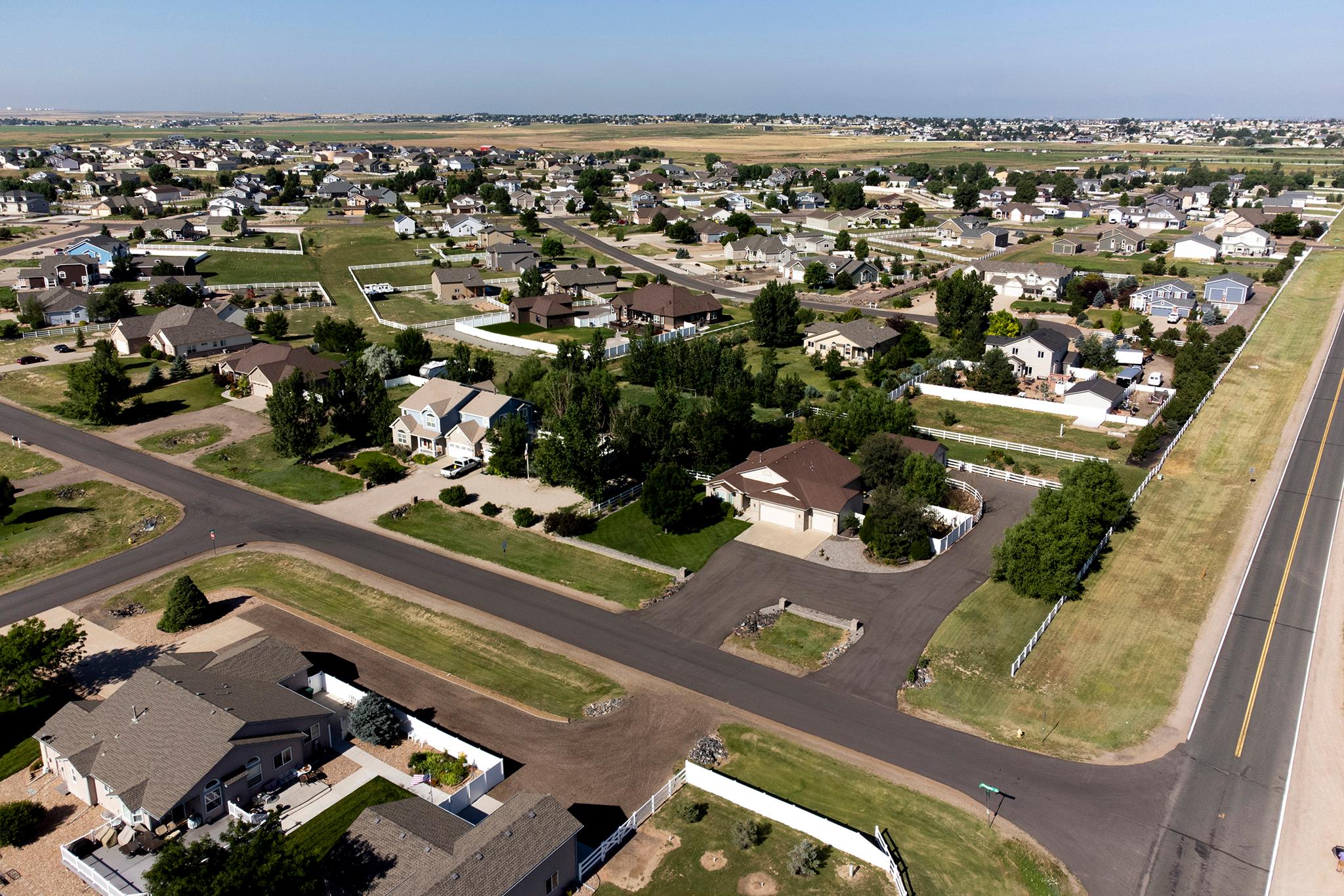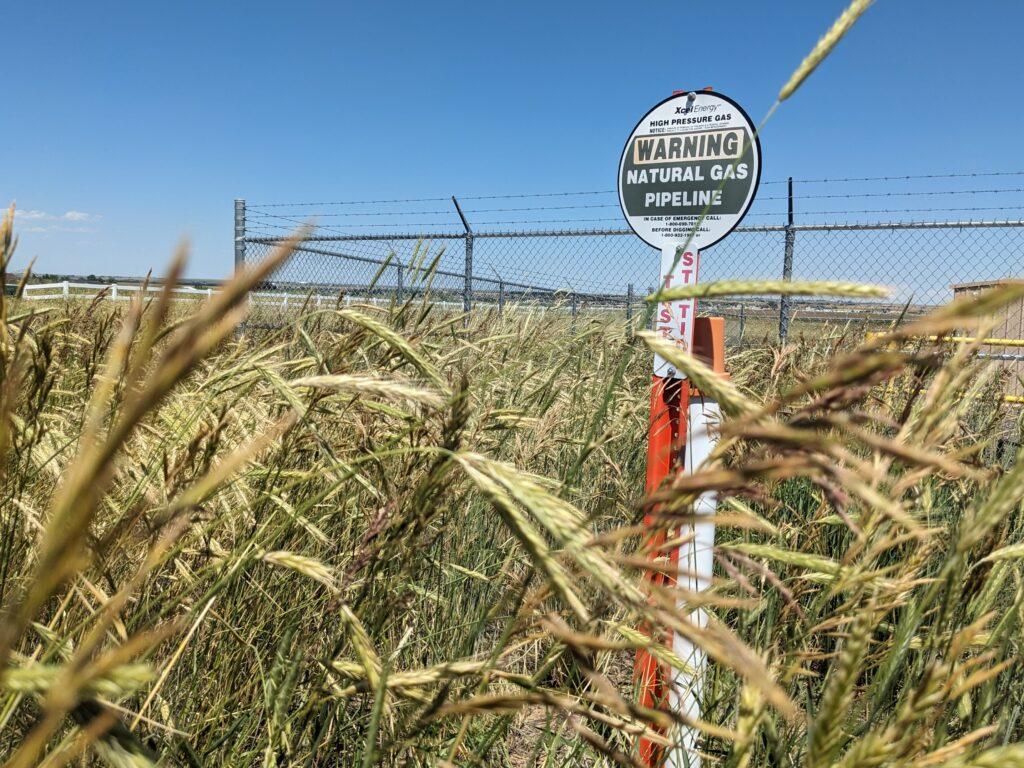
Standing at her front door, Ashley Livesay couldn't mask her surprise after learning her stove and furnace could soon be fueled partly with hydrogen.
"Is this a done deal?" she asked. "Or is there any way to stop this from happening?"
Livesay lives in Box Elder Creek Ranch, a subdivision near Hudson, Colorado, about 30 miles northeast of Denver. Many residents chose the 236-home development in Adams County for its acre-plus lots and roomy homes. Surrounded by farmlands, it's the kind of place people leave their garage doors open when they mow lawns or wash pickups.
It’s also where Xcel Energy, Colorado's largest gas and power company, plans to try out mixing hydrogen into its natural gas system. The company sees the strategy as a way to cut emissions without replacing gas stoves or furnaces. Meanwhile, some residents aren’t eager to be guinea pigs in a project environmental advocates warn is a dangerous climate distraction.
The experiment has extra urgency as Colorado aims to build a hydrogen economy almost from scratch. With the state also set to consider climate plans from gas companies, a coalition of environmental advocates is rushing to stop the demonstration project before hydrogen gains a foothold in residential neighborhoods.
The pitch for hydrogen in homes
Xcel Energy has big plans for hydrogen as a key part of its climate strategy.
That’s because the fuel can be coaxed from water with renewable energy. Unlike conventional methane in natural gas, burning hydrogen also doesn’t result in any direct carbon pollution.
Aside from its pledge to shift to renewable electricity, the company has promised to eliminate the climate impact of its natural gas network by 2050. That’s no easy task considering the size of the system. Financial documents show the company owns 39,000 distribution and transmission pipelines serving 2.1 million customers across the country. More than 70 percent of those customers — about 1.5 million — live in Colorado alone.

The ubiquity of natural gas is one reason burning the fuel in buildings is the state’s fifth-largest source of climate-warming emissions. Electric appliances are one potential fix. If homes are converted to use heat pumps and inductions stoves, residents could slash emissions by plugging into an increasingly renewable energy grid.
To encourage the shift, climate-minded communities like New York City and Crested Butte have banned natural gas in new construction. A rush of state and federal laws like the Inflation Reduction Act — a climate and health care law signed by President Biden last year — has set aside generous incentives to encourage homeowners to move away from natural gas.
Jeff Lyng, a vice president for energy and sustainability for Xcel Energy, said the company considers electrification as one important strategy, but it fears moving too quickly could overwhelm the power grid.
“As grid planners, we have to think about a portfolio of different solutions,” Lyng said. “It’s really a far too risky a bet to put all of our technology eggs in one basket,”
Hydrogen is one important alternative for Xcel, Lyng said. By mixing it into the existing natural gas network, the company could cut emissions and preserve a system capable of delivering large amounts of energy on cold days. He added other hydrogen blending efforts in Hawaii, Minneapolis and Toronto have proven the strategy is safe and effective.
The utility's interest in hydrogen isn't limited to a single neighborhood either. Xcel Energy recently hired Worley, a private engineering and consulting firm, to assess if the strategy could work across its entire natural gas network and highlight any necessary upgrades.
In addition, Xcel Energy has a detailed plan to make hydrogen from renewable energy on Colorado’s Eastern Plains. The proposal is central to a multi-state bid — led by Colorado — to build a “hydrogen hub” in the Rocky Mountain West. The U.S. Department of Energy has set aside $7 billion for a number of hubs across the country through the 2021 Bipartisan Infrastructure Law.
According to the application, the company would use its future hydrogen resources to fuel existing gas power plants and “supply hydrogen blends to customers in Colorado.”

Opponents fear an ulterior motive
Environmental and utility consumer advocates fear hydrogen blending isn’t a really novel climate strategy. It’s an attempt to preserve the business model of natural gas utilities.
As a regulated monopoly, Xcel Energy can only recover a profit from customers through infrastructure investments. That’s why a plan built around retrofitting and building pipelines could extend the lifespan of the natural gas system — and provide a new avenue for shareholder profits.
“Unfortunately, prolonging natural gas is actually really bad for the climate, and doing it with hydrogen is bad for people’s health and quite dangerous at higher blends,” said Andee Krasner, a climate and health program manager for Physicians for Social Responsibility, a public health advocacy group.
Krasner detailed those arguments in a report published last year. Besides locking in continued natural gas emissions, she noted one recent California study found higher hydrogen blends — above 5 percent — can embrittle steel pipes and cause appliance malfunctions. Other research suggests hydrogen blending leads to greater nitrogen oxide emissions, an indoor pollutant known to exacerbate childhood asthma.
In Box Elder Creek Ranch, Xcel Energy plans to start with a two percent hydrogen blend later this December, then work up to a 10 percent blend over the next two years.
In response to safety concerns, Lyng said Xcel Energy will monitor for any leaks. He added Box Elder Creek Ranch was selected, in part, because its gas network is relatively new and built from polyethylene pipes, which can handle higher hydrogen blends without damage.
But environmental groups also doubt the project will help with climate change. While “green hydrogen” can be made with renewable energy, the market currently tends to offer “grey hydrogen” stripped from natural gas. That process releases carbon pollution, which could offset any benefit from delivering hydrogen to customers.
Xcel Energy hasn’t decided where it’ll get hydrogen for Box Elder Creek Ranch, Lyng said. In documents presented to state utility regulators, it nevertheless estimates the $5 million demonstration will avoid about 50 metric tons of carbon dioxide emissions — roughly equal to taking 11 gasoline-powered cars off the road. The company would eventually recover the cost from all natural gas ratepayers, not just residents of Box Elder Creek Ranch.
As a strategy to reduce emissions, Krasner said a far more cost-effective solution is to retrofit homes to rely on wind and solar power.
“Hydrogen will play a very important role in our low-carbon future, but it's going to be in industrial settings,” Krasner said.
A neighborhood of test subjects
Some people who live in the neighborhood, meanwhile, are grappling with their role in an experiment run by an investor-owned utility.
During a recent visit to Box Elder Creek Ranch, CPR News spoke to more than a half dozen residents. Most were in the dark about the project and uncomfortable with the lack of details from Xcel Energy. Two others had heard about the project either from mailers sent by the company or their local homeowners’ association.
One common question was if the residents could still weigh in, or if the demonstration project was a done deal.
Steve O'Dorisio, the chair of the Adams County Board of Commissioners, confirmed Xcel Energy has yet to apply for the necessary land-use and construction permits. He guaranteed the approval process would include opportunities for public input.
It’s less clear whether Xcel Energy needs approval from state utility regulators. The company submitted a proposal for the blending project as a part of an informational proceeding on routine natural gas improvements.
The Colorado Public Utilities Commission had not planned on taking any up-or-down votes on the proposed projects. At a July 12 meeting, regulators confirmed they could force the company to submit a specific application for the blending demonstration. To decide if that’s necessary, the commission asked its staff to gather more information from the company.
A final decision could be a preview of a far larger debate over residential hydrogen. Under a 2021 state law, gas utilities must cut their climate-warming emissions 4 percent by 2025 and by 22 percent by 2030. Xcel Energy must submit a plan to meet the targets by Aug. 1.
Lauren Swain, the coordinator for the Colorado chapter of Physicians for Social Responsibility, said her group would fight to exclude residential hydrogen blending—before it gets a blessing from state regulators.
“It’s dangerous. It’s unhealthy. It produces pollution. And it doesn’t resolve our dependence on fossil fuels,” Swain said.









